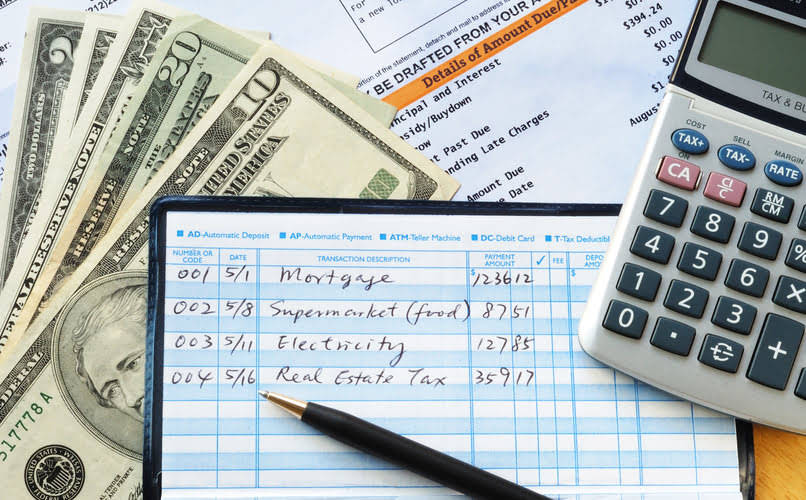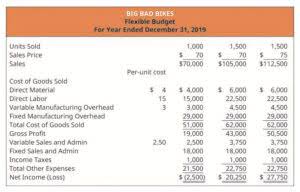Difference Between Trade Discount and Cash Discount Top 5 Differences

The supplier and customer negotiate the discount rate or amount, eligibility criteria, and specific goods or services covered. The supplier sets a list price, serving as the original selling price. When the customer completes a purchase, the trade discount gets applied, resulting in a reduced selling price.
- This perk motivates the reseller to stock and promote the manufacturer’s product, fostering a beneficial business relationship.
- The discount rate and the net price factor are complementary to each other, and they are typically expressed as percentages.
- Eventually, the remaining amount becomes the sale price or the invoice price for the items.
- Overstocking ties up valuable resources, such as warehouse space and capital, which could be utilized elsewhere.
- On the application of the discount, the receiver of the sum gets a reduced amount than the sum actually due to be paid.
- Trade discount is a reduction granted by a supplier of goods/services on the list or catalogue prices of the goods supplied.
Quick Tips for Smarter Discounts
For instance, a retailer might only order 100 t-shirts from a manufacturer at a time and receive a 5 percent trade discount. A wholesaler, on the other hand, might order 1,000 t-shirts at a time and could receive a 12 percent discount. Trade Oil And Gas Accounting discounts are also based on customer loyalty and vendor relationships over time. A trade discount is the amount by which a manufacturer reduces the retail price of a product when it sells to a reseller, rather than to the end customer. The reseller does not necessarily resell at the suggested retail price; selling at a discount is a common practice, if the reseller wishes to gain market share or clear out excess inventory. In simple words, a Trade discount is a discount that is referred to as a discount given by the seller to the buyer at the time of purchase of goods.

Q1: Can you explain what a trade discount is and how it differs from other forms of discounts?
It is provided when the purchaser makes timely or early payment for the goods bought. Modern ERP (Enterprise Resource Planning) systems and accounting software often provide modules specifically designed to track and apply discounts. Leveraging such systems can increase efficiency and consistency in implementing trade discount policies 4.

Differences Between a Trade Discount and Cash Discount

More importantly, they help sellers retain customers and receive payments early, thereby reducing payment and credit risk. For example, if the list price of a product is $100, and a 10% trade discount is offered, the invoice price would be $90 ($100 – $10). For example, let’s say that Manufacturer M sells 1,000 units of product on credit to a Wholesaler W at a list price of $10 per unit, with a 5% trade discount granted by the seller to the buyer. A distributor of merchandise may have a single catalog which displays a single price for each product.
- Moreover, trade discounts impact the balance sheet by altering the value of inventory.
- In this section, we will discuss some key strategies that businesses can employ to make the most out of trade discounts.
- These extra complexities and costs may even result in the overall profits of the manufacturer declining.
- Cash discounts get accounted for separately, with the seller recognizing a reduction in revenue and the buyer recording a reduction in the cost of goods purchased.
- Cash discounts are offered to buyers who pay their invoices promptly, typically within a specified period.
- In Spain this is known as “precio de amigo” in Spanish, or “preu d’amic” in Catalan.
- Ultimately, everyone benefits from this system, as both parties receive financial gain in exchange for a valuable service.
This scenario illustrates how series discounts benefit both the supplier (by ensuring prompt payment) and the distributor (by reducing the overall purchase cost). Understanding trade discounts through practical examples from both retail and wholesale scenarios can provide deeper insights into why proper computation is critical to profitability. In order to understand how this works, lets look at the example used above again.
- Once this discount is given, the net sale price or net amount which the customer has to pay will be calculated.
- For example, if the list price of a product is $100, and a 10% trade discount is offered, the invoice price would be $90 ($100 – $10).
- In this blog post, we will explain what trade discounts are and how they are treated in the books of accounts.
- He has been the CFO or controller of both small and medium sized companies and has run small businesses of his own.
- In some cases, trade discounts may be subject to various conditions to drive purchase decisions in support of the suppliers’ commercial and financial goals.
- Wholesalers use this math trick to move truckloads of products and keep loyal partners coming back.
- These examples illustrate the diverse nature of trade discounts and the various ways in which they can be structured to achieve specific sales and financial objectives.

Discount is an allowance provided to the customers in specific circumstances. In business, there are two main types of discounts, i.e. trade discounts and cash discounts. While trade discount is the reduction in the list price of the product, whereas cash discount is offered by the firms to its customers to encourage early payments. Your competitors will react by lowering their prices, creating a downward spiraling price war. This impacts profit margins for both you and the building supplies companies. Clever pricing strategies seek to reward those who sell more by giving them the best margins.
The negotiation process is a delicate balance of give-and-take, where both parties aim to achieve a win-win outcome. Effective communication, understanding each other’s business needs, and being willing to compromise are key elements in successful trade discount negotiations. The ripple effect of trade discounts extends to inventory management. When buyers normal balance take advantage of these discounts, they are often motivated to purchase larger quantities, which can lead to more efficient inventory turnover. This not only helps in reducing storage costs but also minimizes the risk of stock obsolescence.
Design Matters Sponsorship
This method ensures that each discount is calculated on the progressively reduced price, rather than the original list price, which can lead to more substantial savings. Mr. X purchased goods from Mr. Y for a list price of $8000 on April 1st, 2018. Mr. Y allowed a 10% discount to Mr.X on the list price for purchasing goods in bulk quantity. Further, a discount of $500 was allowed to him for making an immediate payment.

Cash discount is a deduction allowed by a supplier of goods or by a provider of services to the buyer from the invoice price. The higher the trade discount, the higher the profit margin you can earn. When you resell the goods, you can decide on their resale price and directly influence the amount of money you will earn. Understanding what is discount trading, requires getting familiar with its basic advantages. If you find a seller that will offer a trade discount, you can significantly reduce the budget for purchasing the goods. It is not separately shown in the books of accounts; entries recorded in purchase book or sales book are recorded as the net amount, i.e.
What Is a Trade Discount?
Trade discount is the reduction in the retail price of a product that the manufacturer offers when selling to a reseller, rather than the end customer. This perk motivates the reseller to stock and promote the manufacturer’s product, fostering a beneficial business relationship. The only journal entry made is for the final net price ($9,500) at which the exchange takes place. The list price ($10,000) and the trade discount ($500) what is a trade discount are not separately entered into the accounting records. Businesses often use specialized software to manage and calculate trade discounts efficiently. Tools like QuickBooks and SAP ERP systems can automate these calculations, ensuring accuracy and saving time.
